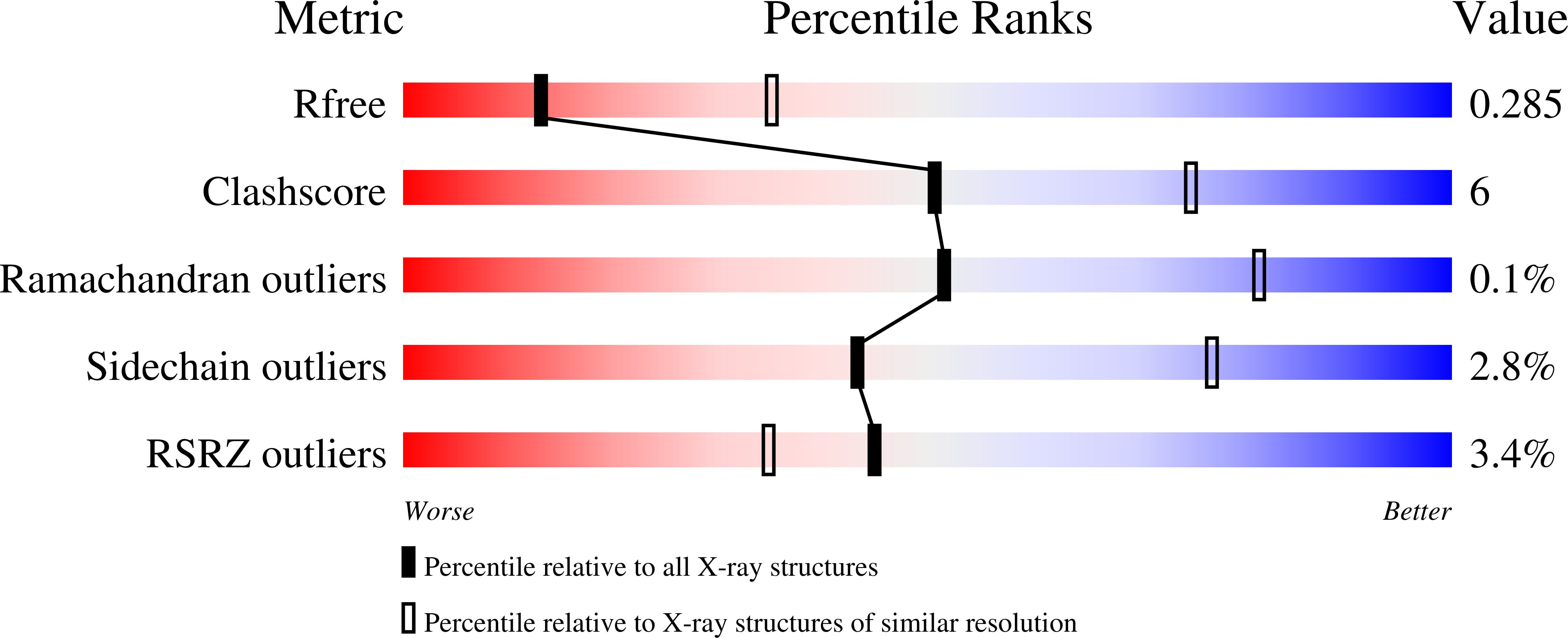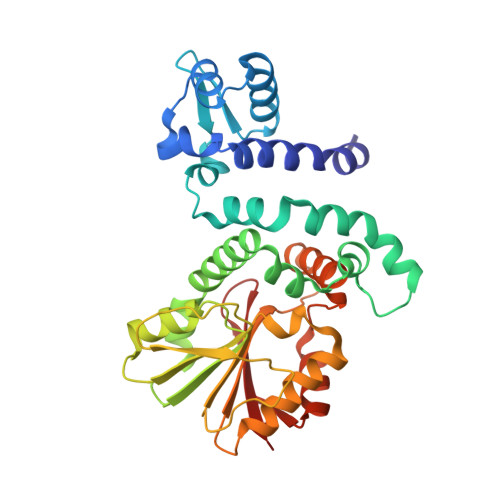A set of closely related methyltransferases for site-specific tailoring of anthraquinone pigments.
Huber, E.M., Kreling, L., Heinrich, A.K., Dunnebacke, M., Pothig, A., Bode, H.B., Groll, M.(2023) Structure 31: 573
- PubMed: 36963398
- DOI: https://doi.org/10.1016/j.str.2023.03.001
- Primary Citation of Related Structures:
8BGT, 8BGX, 8BGY, 8BGZ, 8BH0, 8BIB, 8BIC, 8BID, 8BIE, 8BIF, 8BIG, 8BIH, 8BII, 8BIJ, 8BIR - PubMed Abstract:
Modification of the polyketide anthraquinone AQ-256 in the entomopathogenic Photorhabdus luminescens involves several O-methylations, but the biosynthetic gene cluster antA-I lacks corresponding tailoring enzymes. We here describe the identification of five putative, highly homologous O-methyltransferases encoded in the genome of P. luminescens. Activity assays in vitro and deletion experiments in vivo revealed that three of them account for anthraquinone tailoring by producing three monomethylated and two dimethylated species of AQ-256. X-ray structures of all five enzymes indicate high structural and mechanistic similarity. As confirmed by structure-based mutagenesis, a conserved histidine at the active site likely functions as a general base for substrate deprotonation and subsequent methyl transfer in all enzymes. Eight complex structures with AQ-256 as well as mono- and dimethylated derivatives confirm the substrate specificity patterns found in vitro and visualize how single amino acid differences in the active-site pockets impact substrate orientation and govern site-specific methylation.
Organizational Affiliation:
Technical University of Munich, TUM School of Natural Sciences, Department of Bioscience, Center for Protein Assemblies, Chair of Biochemistry, Ernst-Otto-Fischer-Str. 8, 85748 Garching, Germany. Electronic address: eva.huber@tum.de.



















